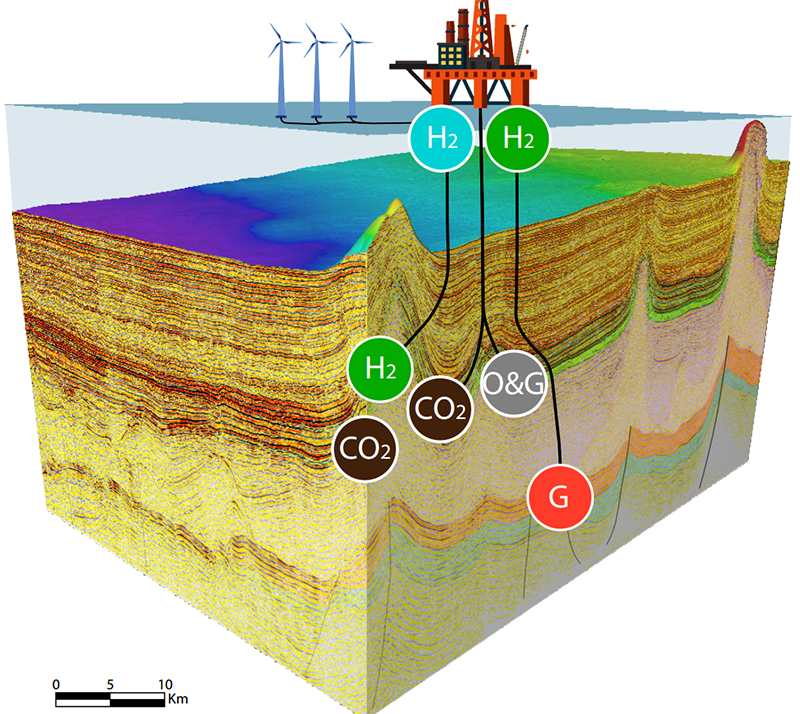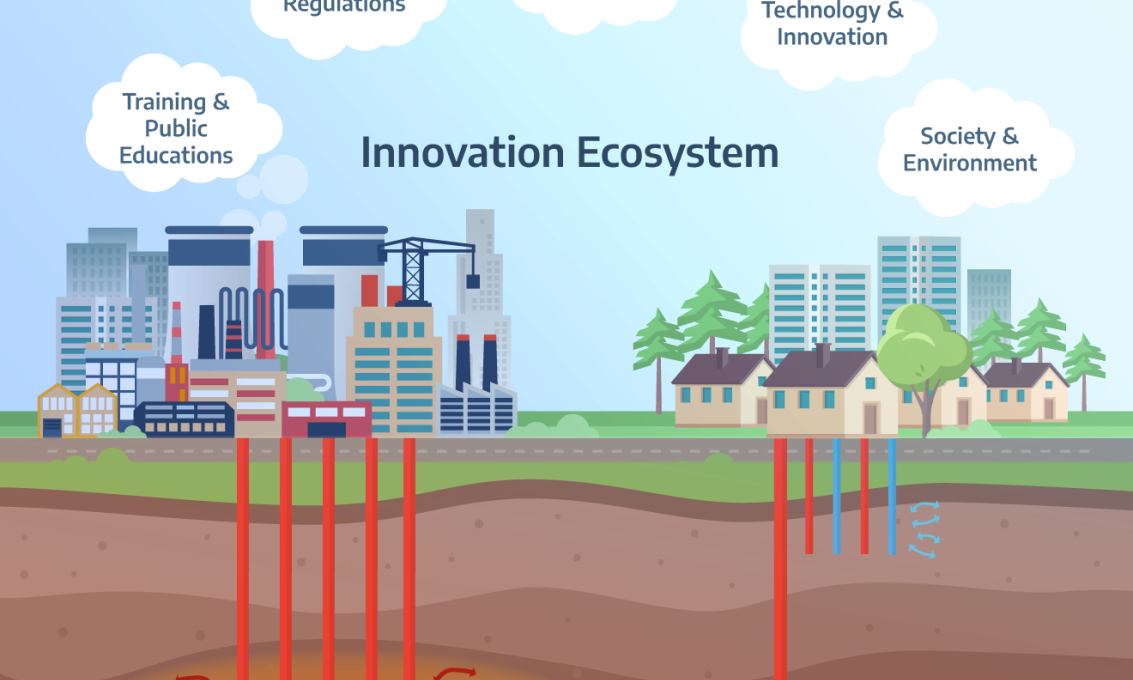The Subsurface Utilisation and Renewable Energy group addresses the latest issues related to the energy transition, underground hydrogen storage, geothermal heat production and geo-sequestration of carbon.
Published
Updated on

The demand to become carbon neutral by 2050 requires a shift from fossil fuels to renewable energy and the decarbonisation of heavy industry using Carbon Capture and Storage (CCS) technology. The group help the department to build its competencies on these matters and to take national and international leadership role in the energy transition era.
Group Mission
The group will be focusing on three prime areas that are the major drivers towards a carbon neutral future. These areas include:
- Underground Hydrogen Storage: Hydrogen as a major energy vector plays an important role in decarbonising the heavy industry and achieving a carbon neutral society by 2050. However, blue hydrogen production through steam methane reforming and green hydrogen production through electrolysis require large storage sites to maintain smart grid stability and balance fluctuations in energy demand. Underground salt caverns, depleted gas reservoirs and saline aquifers are places with a storage capacity of giga tonnes, but their long-term integrity, loss of hydrogen, leakage risks and potential induced seismicity are still debatable.
- Geothermal Reservoirs: Geothermal energy is a promising replacement for fossil fuels and can supply the energy deficiency posed by other renewable resources. With the advancement of technology and the development of the binary Organic Rankine Cycle (ORC), even medium temperature sedimentary basins can now be considered for heat mining and energy production. However, heat extraction from hot dry rocks (HDR) and sedimentary basins has many challenges to resolve, such as fracture design, scale formations (salt and calcite), reservoir deformation, induced seismicity, and wastewater management.
- Carbon Geo-sequestration: A global reduction in CO2 emissions can be achieved through the successful implementation of carbon capture and storage (CCS) projects around the world. However, the success of a CCS technology depends on the availability of large and suitable storage sites. Although saline aquifers, depleted hydrocarbon reservoirs, unconventional formations (shale), volcanic (basalt) basins and coal seams have been suggested as safe storage sites, the interaction of CO2 with reservoir rocks, the degradation of well materials (cement and casing), the integrity of the caprock, the likelihood of leakage and the potential for induced seismicity are some of the major challenges that need to be further assessment for a successful CO2 storage project at laboratory and field scale.
Researchers
PhD Candidate
Faculty of Science and Technology
Department of Energy Resources
Department of Energy Resources




